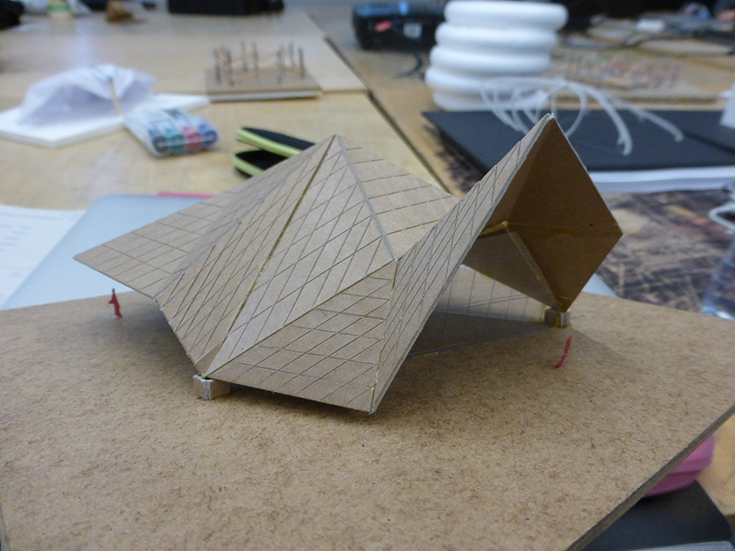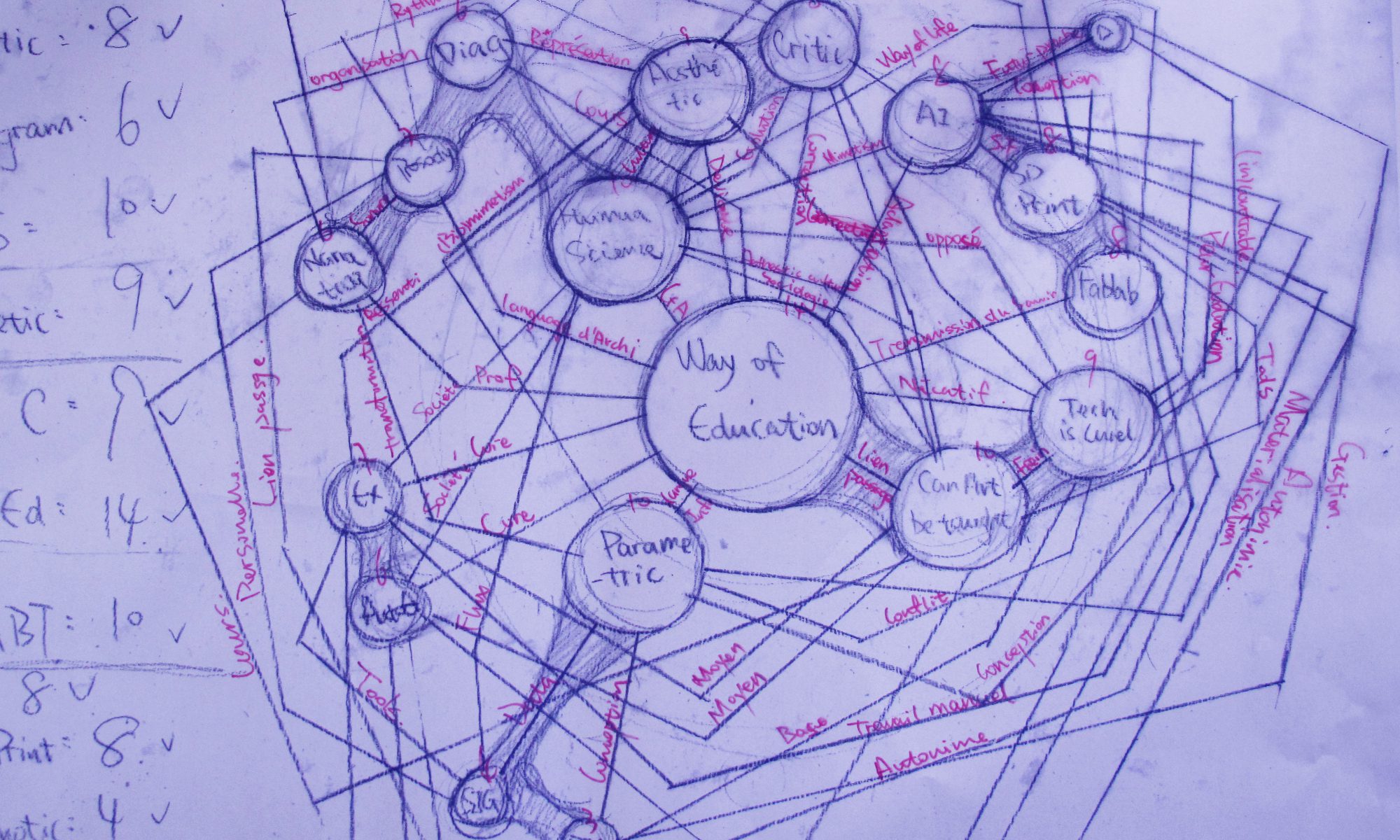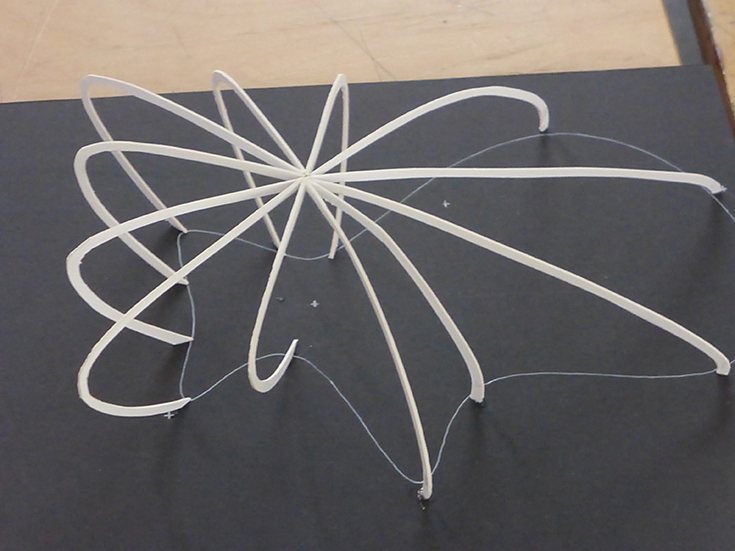Generative machine is composed by :
Enrique Gil, Nathan Meller, Diego Rodriguez de Martini, Julia Rokneddine-Jouffroy
« The machine is based on the links established between the themes of the initial researches. Those themes were chosen according to the future program: a school of architecture in the Bois de Vincennes. Each of those themes are subdivided into smaller topics, between which links were established. Those links were given names, in order to see which topics are connected and on which ground.
Naming the links was a first step, but not sufficient. Indeed, some topics appeared to be more strongly related than others. To build a school program, it wasn’t so much
about knowing the nature of the links as their strength, in order to see which were more important than others. »
« In order to understand this, the construction of analogical models was necessary. After a few different models, the possibility to make them evolve appeared to be an important criteria. Going back to digital model was then a necessity, in order to build a model capable of evolution and change. Since values replaced names in the way to define the links, the model built took in consideration those values and established one answer to how the topics could be linked. The interesting parameter being that those values are completely subjective, they depend on who makes the model, therefore the number of answers is infinite. »
« The Machine
There was then the machine on one hand, which gave a digital represenation of pieces of data that someone (or something?) would have given. Capable of changing according to the data, the machine could give an infinite number of different results and could work with any kind of topic.
The Site
One the other hand, there is the plot, with its caracteristics, creating an environnement that should be taken in consideration. Of course, many of the trees are quite yound and were planted when the university of Vincennes was destroyed, so the landscape isn’t that old and can be easily transformed. »
« Working for a long time on the notion of transformation, we developed the idea of a school that would be transformed by the students. The operator of the transformation would then be the student, the key element allowing state 1 to become state 2.
The concept of learning by doing also appeared to us as one of the best way to develop one’s skills, this is why this school would be expanded through time by the students themselves,
building, destroying and transforming the spaces as needed. Having one basis at the beginning, spaces would be refit as years will go by and students would therefore learn to build,
unbuild, transform, reconvert, recycle, in groups or by them- selves, to learn architecture with real materials. »
« Step One
The first step was all about matching the site with the Machine we created earlier. How could it be possible to combine a system like the machine with creating a school of architecture on the given plot.
Step Two
To do so, we started with establishing boards that would describe the exact needs of each part of the program of the school (the need for sunlight, for trees, for low temperature etc…). In order to do the same with the site, we established a grid of points covering the whole plot, and we established a second board describing each point with the same criteria of the ones in the program board.
Step Three
Using Rhinoceros and Grasshopper, we compared each point of the site with each part of the program to find the ones that have a better match rate. We hoped then that the machine would give us the perfect position on the plot for each element of the program.
Step Four
Using the machine and its results, each member of the group decide to experiment on its own what could be done with those pieces of data, and what would be the next step in order to create a proper building. »
Nathan Meller
 Enrique Gil Diego Rodriguez De Martini
Enrique Gil Diego Rodriguez De Martini
Diego Rodriguez De Martini

























